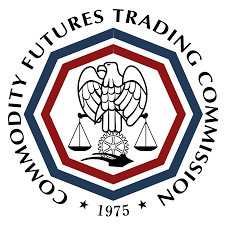 The Commodities Futures Trading Commission’s (CFTC) power to prosecute market manipulation may be determined by a case making its way through federal court.
The Commodities Futures Trading Commission’s (CFTC) power to prosecute market manipulation may be determined by a case making its way through federal court.
The Futures Industry Association (FIA) held its most recent webinar entitled “CEA (Commodities Exchange Act) Manipulation Law.”
The webinar was hosted by attorneys from the derivatives division of Skadden, Arps, Slate, Meagher & Flom LLP.
Their broad powers come in part from the CEA Rule 180.1, which was updated after the Dodd/Frank bill passed in 2010.
Here is part of a primer describing how CFTC’s powers increased to prosecute manipulation with Dodd/Frank.
“Final Rule 180.1 enhances the Commission’s ability to prosecute manipulation. Prior to Dodd-Frank section 753’s amendments to CEA Section 6(c), in order to prevail in a manipulation case, the Commission was required to prove: (1) that the accused had the ability to influence market prices; (2) that the accused specifically intended to create or effect a price or price trend that does not reflect legitimate forces of supply and demand; (3) that artificial prices existed; and (4) that the accused caused the artificial prices.” The primer stated. “Final Rule 180.1 implements the provisions of CEA section 6(c)(1) by prohibiting, among other things, manipulative and deceptive devices, i.e., fraud and fraud-based manipulative devices and contrivances employed intentionally or recklessly, regardless of whether the conduct in question was intended to create or did create an artificial price. This broad new authority will help the Commission to promote the integrity of the markets and protect market participants.”
A case currently in the federal court system may limit that power: CFTC Vs. Donald Wilson and DRW Investments LLC.
The CFTC lost that case in December, and the conclusion may have repercussions beyond the case. Here is part of a Reuters story.
“The CFTC had accused Wilson of exploiting the market for a particular three-month interest rate swap futures contract and placing trades he knew would never be consummated.
“But the judge said the trades had a legitimate economic rationale, including to entice buyers in an illiquid market, and that it was ‘beyond the shadow of a doubt’ that the defendants sincerely believed the contract was worth more than their bids.
“The judge said all Wilson did was pursue a trading strategy he thought he understood better than rivals such as Jefferies & Co and Jon Corzine’s former firm MF Global.”
While the CFTC argued that Wilson was manipulating the price of swaps, the court found the manipulation was not done to set an artificial price but rather to create balance in an illiquid market.
“The mere intent to affect prices is not enough; rather the CFTC must show that Defendants intended to cause artificial prices- i.e., prices that Defendant understood to be unreflective of the forces of supply and demand.” One slide noted.
The CFTC is now appealing the ruling, but if it stands, the CFTC will have to prove that market manipulation was intended to cause artificial price moves and mere manipulation is not enough.
The CFTC’s powers over manipulation must be balanced between two ideals, according to the webinar.
In Cargill Vs. the Secretary of Agriculture, a 1971 case, the 8th Circuit Court found, “The methods and techniques of manipulation are limited only by the ingenuity of man.”
On the other hand, many people believe regulators see manipulation as a bogeyman. In 1928, William Clayton, a cotton trader, testified in front of Congress and said, ‘The word ‘manipulation’…in its use is so broad as to include any operation of the market that does not suit the gentleman who is speaking at the moment.”









